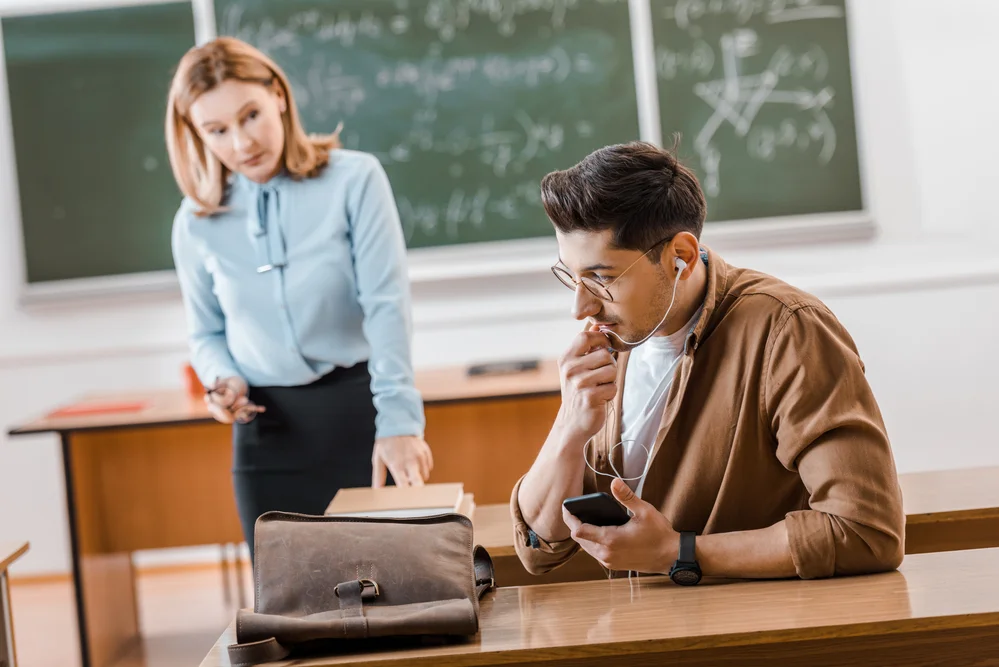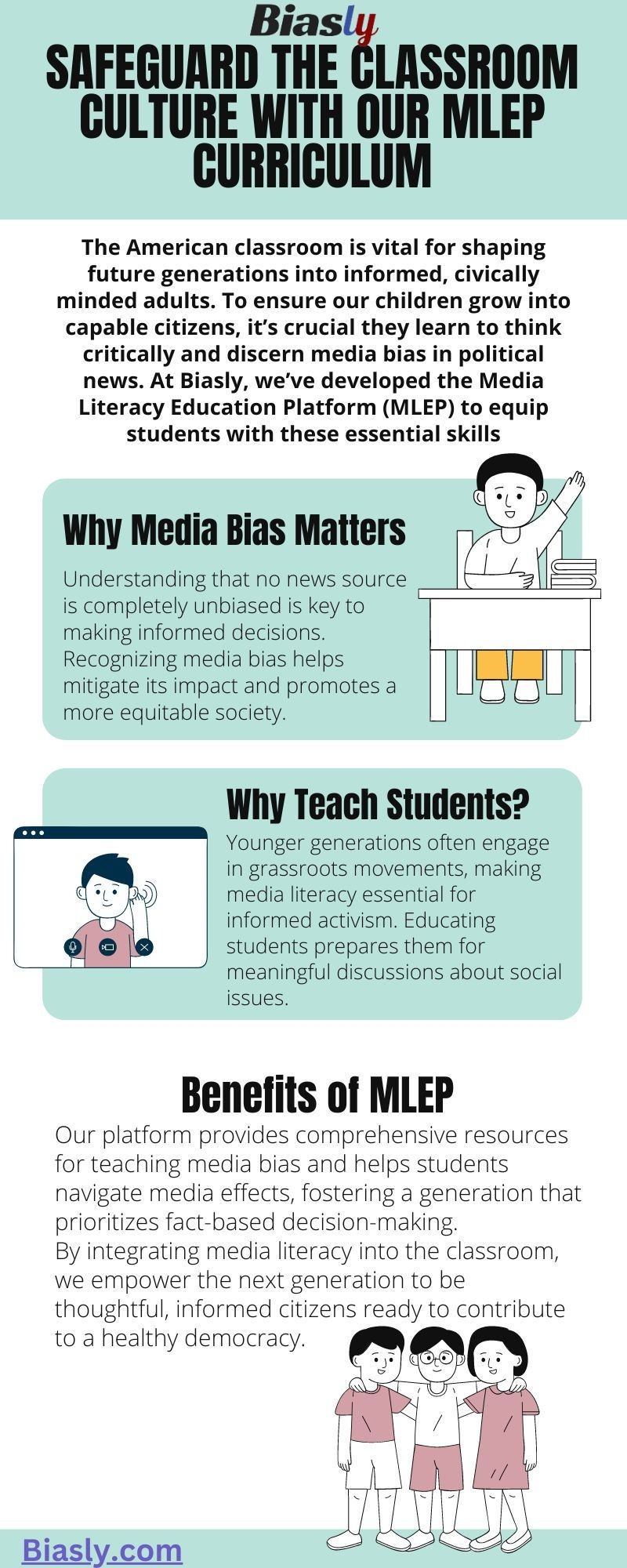
The American classroom is the beating heart of future generations. It’s where our children are shaped and formed into civically minded adults who will go on to shape and form our nation. That’s why it is more important than ever that they be given the proper tools to teach them how to critically think, including the ability to judge and discern media bias in political news. Here at Biasly, we’ve developed a curriculum to help students in this endeavor, using our Media Literacy Education Platform (MLEP).
Why does Media Bias Matter
When it comes to the news, there’s really no such thing as a completely unbiased media source. Every company is made up of and run by individual people, and it’s just a part of human nature to have biases, especially about politics. While some of these news outlets do better than others with managing and recognizing bias, even the best of them are still going to have at least some. If we, the American people, are going to make informed decisions with our ballots, then we need to be informed by the facts, not the bias, so it’s important that we learn how to recognize it.
To that end, it’s also important that we are able to recognize which direction that bias leans, and determine which news outlets do the best job at minimizing how much control they give to their bias. That way, we can learn to minimize the impact of bias in our own lives, thereby creating a more fair and principled society that brings American ideals to life for all its citizens.
Why Teach Students About Media Bias?
Where better to start educating Americans about media bias, than in the classroom? Younger generations are usually either very involved in politics or not at all. When they are active, they don’t always vote more, but generally are more involved in grassroots efforts for political reform, discussion, and change, such as protests and demonstrations on both sides of the aisle.
This provides a perfect opportunity to build up future generations to be more politically literate by helping them with our media bias education software and courses. We can ensure that they are better informed and able to discern media bias, keeping themselves better informed. When they are better informed and aware of biases, they are more likely to succeed with discussing their opinions with others and being an influence for good.
Why the Classroom?
As pointed out in a previous article, education can be inherently political and needs to continuously improve in order to ensure that our upcoming generation is aware of the political and social issues facing our country. If future generations are going to be civically minded and media-literate, then they need to have all the right tools and information to become so.
Teaching them critical thinking skills they need, includes the ability to discern media bias. It will help them safeguard the future of the American government because as a democracy our government needs its citizens to be able to think for themselves and be guided by the facts.
Why MLEP?
Our Media Literacy Education Platform provides educators and students with the tools that they will need to improve their media literacy skills. It helps teachers prepare their students for the very real effects of bias in the media and politics, and teaches them how to understand it, see it, and see through it, to the facts.
And the more people who can learn to recognize media bias and aim for fact and information-driven decisions instead, the better it is for everyone, and America as a whole. Here are the benefits to using MLEP:























